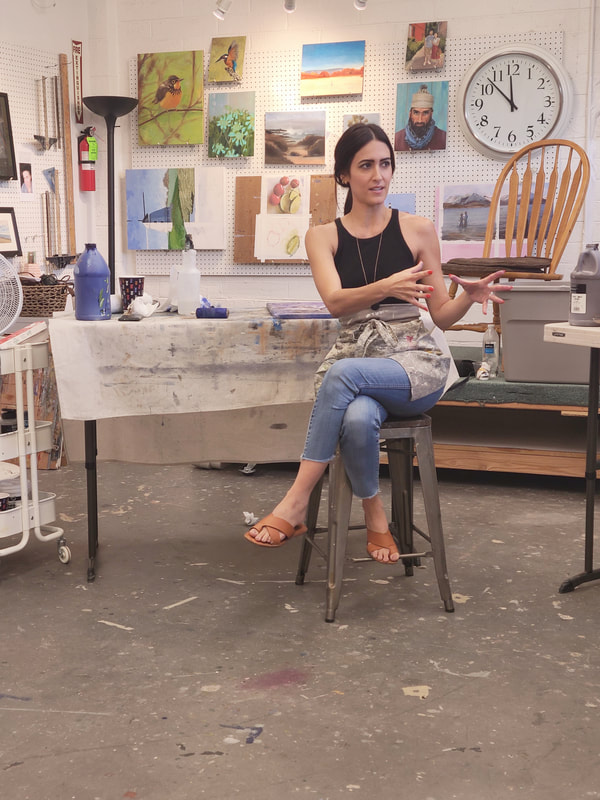|
The more rules you seek, the more rules you'll find. But be warned: Don't steep yourself so deep in learning the rules that you become stuck and paralyzed to approach the blank canvas. Remember, in the realm of art, there exist no absolutes—only diverse outcomes. Forge your own path; let your creativity dictate the rules. I urge you to harness time and practice wisely. With 13 years of professional painting under my belt, composition has become like background music to me—ever-present but not dominating my thoughts. This level of ease has evolved from crafting nearly a thousand canvases over my career. Despite this, I've refrained from delving into composition intricacies in my writings, fearing to instill unnecessary apprehension. However, in my workshops, we delve into Composition Basics, hoping they serve as guiding lights in your creative journey. Top 12 Fearless Abstract Painting Composition Principles: 1. Embrace Distance Perception: Objects appear less defined from a distance, with colors shifting in value, saturation, and hue. Leveraging Atmospheric Perspective creates depth in your paintings. 2. Harness Color Weight: Dark colors carry more visual weight. Ground your composition by placing darker hues at the bottom, establishing a solid foundation for your canvas. 3. Lightness Elevates: Light colors have a buoyant quality. Lift your painting by incorporating lighter tones at the top, giving a sense of elevation and openness. 4. Texture as Anchoring: Texture lends weight to a painting. Concentrate textured elements at the bottom to anchor your composition firmly. 5. Lightness in Texture: Areas of light texture convey lightness. Position less textured sections towards the top, enhancing the sense of airiness and freedom. 6. Dynamic Horizon Placement: Avoid static compositions by situating the "horizon line" either above or below the middle. This dynamic placement adds visual interest and engagement. 7. Avoid Bullseye Composition: Keep high visual interest away from the center to maintain viewer engagement. Experiment with off-center placements for a more dynamic composition. 8. Utilize Drips for Dynamics: Harness the directional flow of drips to evoke different emotional responses. Downward drips convey stability, while upward ones create tension and energy. 9. Expand Beyond the Canvas: Paint without boundaries to create a sense of boundless expansion. Letting your strokes extend beyond the canvas imparts a feeling of freedom to the viewer. 10. Embrace Contrast: The human eye craves contrast. Experiment with contrasts in color, texture, and form to create visual interest and intrigue. 11. Rotate for Perspective: Test your composition by rotating the canvas in all directions. If it remains visually compelling from every angle, you've likely achieved a strong composition. 12. Embody Emotion in Creation: Infuse your painting process with the emotions you wish to evoke in your viewers. Approach the canvas with a sense of freedom and abandon to inspire similar feelings in your audience. Comments are closed.
|
This blog was created to share my belief that the art-making process is a catalyst for transformation and personal empowerment. I am living proof.
Categories
All
|
